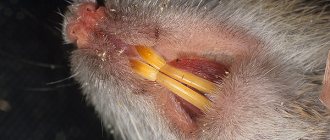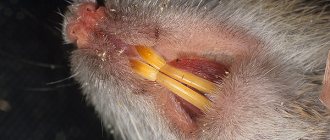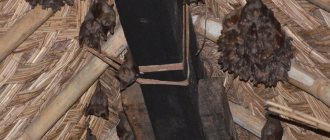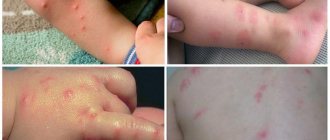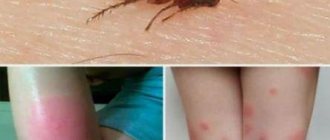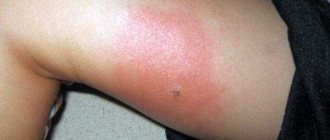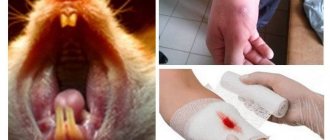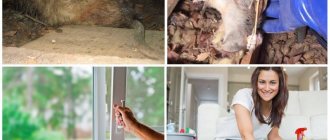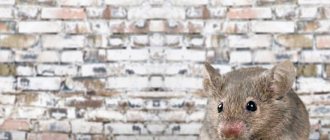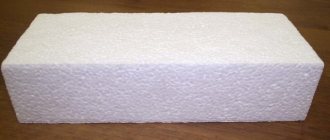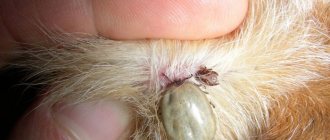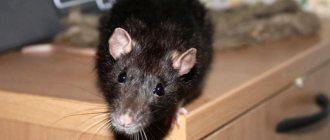Mice are shy and cautious animals. Having settled next to a person, they go out in search of food only after making sure they are safe. This continues as long as their family is small. High fertility quickly increases the number of rodents in the house, and food becomes scarce.
In search of food, mice begin to run around tables and under cabinets. They can even climb onto a person’s bed, especially those who like to chew something tasty in bed.
Do mice bite?
Mice attack people only in critical situations for rodents. Usually they try to hide and not be seen. Instincts force you to defend yourself and overcome fear when:
- There is a threat to life. Animals can climb on a sleeping person. An inadvertently pinned mouse will definitely bite, saving itself. It is also dangerous to pick up an animal that is lying on the floor and looks sick. Whatever humanitarian goals are pursued, the rodent will perceive this as an attack.
- A threat to the animal's home appears. Even accidental destruction of mouse nests, for example, when dismantling old things in the attic or basement, causes aggression in animals. You cannot consider yourself protected from mouse bites by wearing boots. The animals easily climb on a person, clinging to clothing with sharp claws, and quickly get to those places where their teeth can cause pain.
- The need to protect offspring. With any threat to the little mice, real or imaginary, maternal instinct makes them forget about fear and attack the enemy, no matter how much larger it is in size. Not only people, but also cats and dogs can suffer.
Kus
Prevention
Whether mice carry typhus, plague or other diseases does not matter, the degree of danger does not matter. Prevention is always needed. Within their own species, diseases are actively transmitted between mice and rats, which is facilitated by different weather conditions in which the animal finds itself.
Most bacteria like high humidity and coolness, which is why constant rain and dampness only improve their lives and further development. But a whole list of measures is provided for people that can protect them from terrible diseases.
- Constant compliance with various epidemiological measures and rules.
- Regular mandatory disinfestation work and sanitary measures to combat rodents.
- Protection of warehouses, basements and sheds from rats, mice and other rodents.
- Water purification and monitoring the condition of water supply systems.
- Mass sanitary propaganda, education of all segments of the population without exception.
What does a mouse bite look like?
The animal has sharp teeth that can cause serious wounds. A mouse bite can look different, it all depends on how a person behaves at that moment in time:
- Light scratches from teeth . This happens when a rodent's incisors touch the skin only tangentially. This can happen if, for example, you jerk your hand sharply at the moment when the mouse is about to sink its teeth into a person’s finger.
- One or two continuous stripes left by the front incisors. Outwardly they look like a pair of punctures at a short distance, since the mouse has a small mouth. This is how an animal can bite a sleeping person.
- With torn flesh pulp. This happens if you jerk your hand hard at the moment when the animal’s teeth have already sunk into it.
Nutrition
House mice have a main diet of grains and seeds. They happily eat wheat, oats and millet, as well as unroasted pumpkin and sunflower seeds. They can also be given dairy products, white bread, pieces of egg white and cooked meat. The green parts of various plants can make up a third of the animal’s diet with a normal amount of water. At the same time, among succulent foods, mice prefer cabbage and dandelion leaves, slices of cucumber, beets and carrots, and green grass. Mice need up to three milliliters of water during the day. In summer they can feed on insects and their larvae. Mice have a very high metabolism, therefore, they should always have food in their feeder.
Such mice are evening and nocturnal animals; they can disturb sleep with the noise and various sounds they create, although they generally adapt to the human regime.
How can you get infected from a rodent bite?
Despite the slight blood loss, a mouse bite is more dangerous than it seems at first glance. Animal saliva often contains pathogens of serious infections that these animals carry. Infection may not be detected immediately, as symptoms appear later.
Diseases that can be transmitted by a mouse bite:
- Rabies. The first signs of the disease are headaches, a slight increase in temperature, and a depressed mood. As the disease progresses, hallucinations and epileptic seizures may appear. If treatment is not started on time, death occurs due to the destruction of brain cells. Rabies from a mouse bite is treated with rabies immunoglobulin vaccine.
- Tularemia. The first symptoms may appear either after a day or after a month. The temperature rises to +38...400C, weakness and muscle pain are felt. Then the lymph nodes become inflamed, a rash appears on the skin, and blood pressure is reduced. Secondary pneumonia may develop.
- Leptospirosis. Primary symptoms are similar to tularemia. The differences are puffiness, redness of the face and neck, and an increased vascular pattern in the eyes. At the second stage, internal organs are affected - kidneys, liver, nervous system. The skin becomes jaundiced.
- Tick-borne encephalitis. The disease manifests itself on the 5th–6th day of infection immediately in an acute form. Sometimes patients can name the exact time when they became ill. Chills appear, temperature rises, weakness. If left untreated, the virus can affect the brain and spinal cord.
- Plague. The risk of being bitten by an animal infected with this disease is minimal, since the animals themselves die from it on the second day.
Carries diseases
The listed diseases do not reflect the entire list that a mouse bite can lead to, so you should not delay going to the doctor.
Types of winged animals
Some species of nocturnal mammals carry diseases that pose a danger to humans. One of the most common diseases that can be contracted through contact with an animal is rabies. The risk of human infection from a bat is lower than from contact with wild animals of other species. For example, foxes or wolves. In the Russian climate, three types of bats are dangerous:
- pond bat;
- water bat;
- late leather
Moths choose caves, crevices in rocky areas and underground mines as shelter. Late Kozhan can live in houses or apartments. Of the entire colony of animals, only some individuals pose a danger. Infected cells are found in the animal's brain and salivary glands. The virus also accumulates on the skin in the neck area.
What to do if bitten by a mouse?
If a wound is caused by a rodent, it is not enough to simply bandage it. If it is not possible to see a doctor immediately, you should know what and how to do first.
First aid
When a mouse has bitten a finger or other part of the body, first aid can be provided at home if you act correctly.
- The wound should immediately be washed for 15 minutes in running water and laundry soap. An alkaline environment is unfavorable for the development of bacteria.
- If the scratches are superficial, then it will be enough to disinfect them. If the flesh on the finger is torn after treatment with a disinfecting solution, the wound should be bandaged with a sterile bandage. With punctures the situation is more complicated. It is advisable to carefully try to draw blood out of it, thus removing pathogenic bacteria. After this, you can use a bandage or plaster.
- If signs of an allergic reaction appear, take antihistamines.
- If a rodent can be caught after a bite, it should be sent to a medical laboratory to understand what infection it was carrying.
Children most often suffer from pets, so you need to teach your child how to handle them correctly so that a decorative mouse does not bite him. Children should also be warned about the dangers of playing with field mice.
When should you see a doctor?
Pets rarely carry serious diseases, but when bitten by a field mouse, you should consult a doctor in any case, even in the absence of symptoms.
If signs of a cold appear in the next two to three weeks, then a visit to a specialist cannot be postponed, since many diseases begin this way.
The doctor will tell you what to do, give directions for tests, and prescribe a vaccine against tetanus and rabies, especially if the mouse has bitten until it bleeds.
Consequences of a mouse bite
In addition to the serious diseases that rodents carry, a mouse bite can have other consequences.
The animals live in garbage dumps and basements, where conditions are far from sterile, so they have a lot of pathogenic microorganisms on their teeth. Getting deep under the human skin, they cause sepsis. The closed wounds begin to fester. You cannot do without medical help here.
Treatment of the wound
Immediate action plan
A wild mouse rarely bites a person. She attacks only if she feels a threat to her offspring or home. Due to the fact that this phenomenon does not occur often, people are little aware of the correct course of action in this case.
If, however, the trouble in question does happen, it is recommended to immediately run to the doctor. After all, mice usually carry all sorts of infectious diseases. Timely first aid will help avoid serious health consequences and speed up the treatment process.
So, the order of urgent actions is as follows:
- The area of skin damage is thoroughly washed with running purified water at room temperature.
- The duration of rinsing should be at least 20 minutes.
- To carry out this procedure, use laundry or any other soap.
- Next, the injured area of skin should be properly treated.
- 3% hydrogen peroxide is always used as a disinfectant. In the absence of peroxide, iodine, brilliant green, alcohol, vodka, and triple cologne are used.
- After these steps, a strip of sterile bandage or plaster is applied to the wound.
The first aid at the last stage above is over. All that remains is to go to the hospital or the nearest laboratory. For any animal bite, it is advisable to bring the source of the problem with you (mouse, dog, tick). Experts will examine the rodent and determine whether it is a carrier of any disease.
The doctor is obliged to examine the patient, find out the details of his well-being, carry out the necessary diagnostics, and refer him for tests. Based on the collected data about the patient’s condition, effective treatment is prescribed.
The modern method of treatment is based on administering a certain dose of the vaccine to the victim. To protect the population from a disease such as rabies, rabies immunoglobulin is usually used. A vaccine against an animal bite, and especially a mouse, is not a cheap “pleasure,” so you should be observant and careful when handling rodents in order to avoid such an unpleasant situation.
How to avoid being bitten?
Basic safety rules will in most cases help avoid rodent bites. To prevent the mouse from attacking, you need to:
- Avoid places where they can be found in large numbers. As a rule, these are landfills and basements of multi-story buildings. In rural areas, rodents accumulate in granaries.
- At the first sign of mice appearing in the house, carry out deratization.
- Do not attempt to touch animals with bare hands, even when they appear dead.
- If there are decorative mice in the house, then you need to create comfortable conditions for them and try not to pick them up.
- When planning to clear out trash from an attic or basement, you should wear thick clothing, boots, and work in canvas gloves. Thus, the risk that a mouse will be able to reach human skin with its teeth will be reduced several times.
- When traveling outside the city, you should carefully choose a vacation spot, especially near bodies of water.
Habitat
The house mouse, the photo of which is presented in this article, is actually a wild animal. It got its name for living near humans. House mice live everywhere in the world, with the exception of permafrost areas, Antarctica and high mountains. The Latin name of the animal is Mus musculus, and a 3rd word is added to it, demonstrating the habitat area, for example, house mice that live in southeast Asia are Mus musculus castaneus. In our country, house mice also live almost everywhere: Krasnodar Territory, Rostov Region, Krasnoyarsk Territory, Astrakhan, etc. The only exceptions are the regions of the far north.
